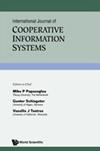基于半自编码器堆叠深度神经网络的DDOS攻击检测
IF 0.8
4区 计算机科学
Q4 COMPUTER SCIENCE, INFORMATION SYSTEMS
International Journal of Cooperative Information Systems
Pub Date : 2023-10-10
DOI:10.1142/s0218843023500259
引用次数: 0
摘要
随着互联网上服务的增长,网络基础设施越来越容易受到网络攻击,特别是分布式拒绝服务(DDoS)攻击,这很容易导致服务中断。及早对网络中的流量进行分离和检测是抵御这些攻击的关键。本文提出了一种半自编码器-堆叠深度神经网络(HAE-SDNN)模型。我们建议使用堆叠深度神经网络(SDNN)模型。作为深度学习模型,以检测DDoS攻击。我们的方法允许使用半自动编码器(HAE)从预处理数据集中进行特征选择,从而产生最终的重要特征集。这些特征随后用于训练堆叠在一起的dnn,通过应用Softmax层来组合它们的输出。实验在一个名为CICDDoS2017的基准网络安全数据集上进行,其中包含各种DDoS攻击类型。实验结果表明,该模型的总体准确率达到了99.95%。此外,HAE-SDNN模型优于现有模型,突出了其在准确分类攻击方面的优势。本文章由计算机程序翻译,如有差异,请以英文原文为准。
DDOS Attacks Detection with Half Autoencoder-Stacked Deep Neural Network
With the growth in services supplied over the internet, network infrastructure has become more exposed to cyber-attacks, particularly Distributed Denial of Service (DDoS) attacks, which can easily cause the disruption of services. The key factor for fighting against these attacks is the earlier separation and detection of the traffic in networks. In this paper, a novel approach, named Half Autoencoder-Stacked DNNs (HAE-SDNN) model, is proposed. We suggest using a Stacked Deep Neural Networks (SDNN) model. as a deep learning model, in order to detect DDoS attacks. Our approach allows feature selection from a preprocessed dataset using a Half AutoEncoder (HAE), resulting in a final set of important features. These features are subsequently used to train the DNNs that are stacked together by applying Softmax layer to combine their outputs. Experiments were performed on a benchmark cybersecurity dataset, named CICDDoS2017, containing various DDoS attack types. The experimental results demonstrate that the introduced model attained an overall accuracy rate of 99.95%. Moreover, the HAE-SDNN model outperformed existing models, highlighting its superiority in accurately classifying attacks.
求助全文
通过发布文献求助,成功后即可免费获取论文全文。
去求助
来源期刊

International Journal of Cooperative Information Systems
工程技术-计算机:信息系统
CiteScore
2.30
自引率
0.00%
发文量
8
审稿时长
>12 weeks
期刊介绍:
The paradigm for the next generation of information systems (ISs) will involve large numbers of ISs distributed over large, complex computer/communication networks. Such ISs will manage or have access to large amounts of information and computing services and will interoperate as required. These support individual or collaborative human work. Communication among component systems will be done using protocols that range from conventional ones to those based on distributed AI. We call such next generation ISs Cooperative Information Systems (CIS).
The International Journal of Cooperative Information Systems (IJCIS) addresses the intricacies of cooperative work in the framework of distributed interoperable information systems. It provides a forum for the presentation and dissemination of research covering all aspects of CIS design, requirements, functionality, implementation, deployment, and evolution.
 求助内容:
求助内容: 应助结果提醒方式:
应助结果提醒方式:


